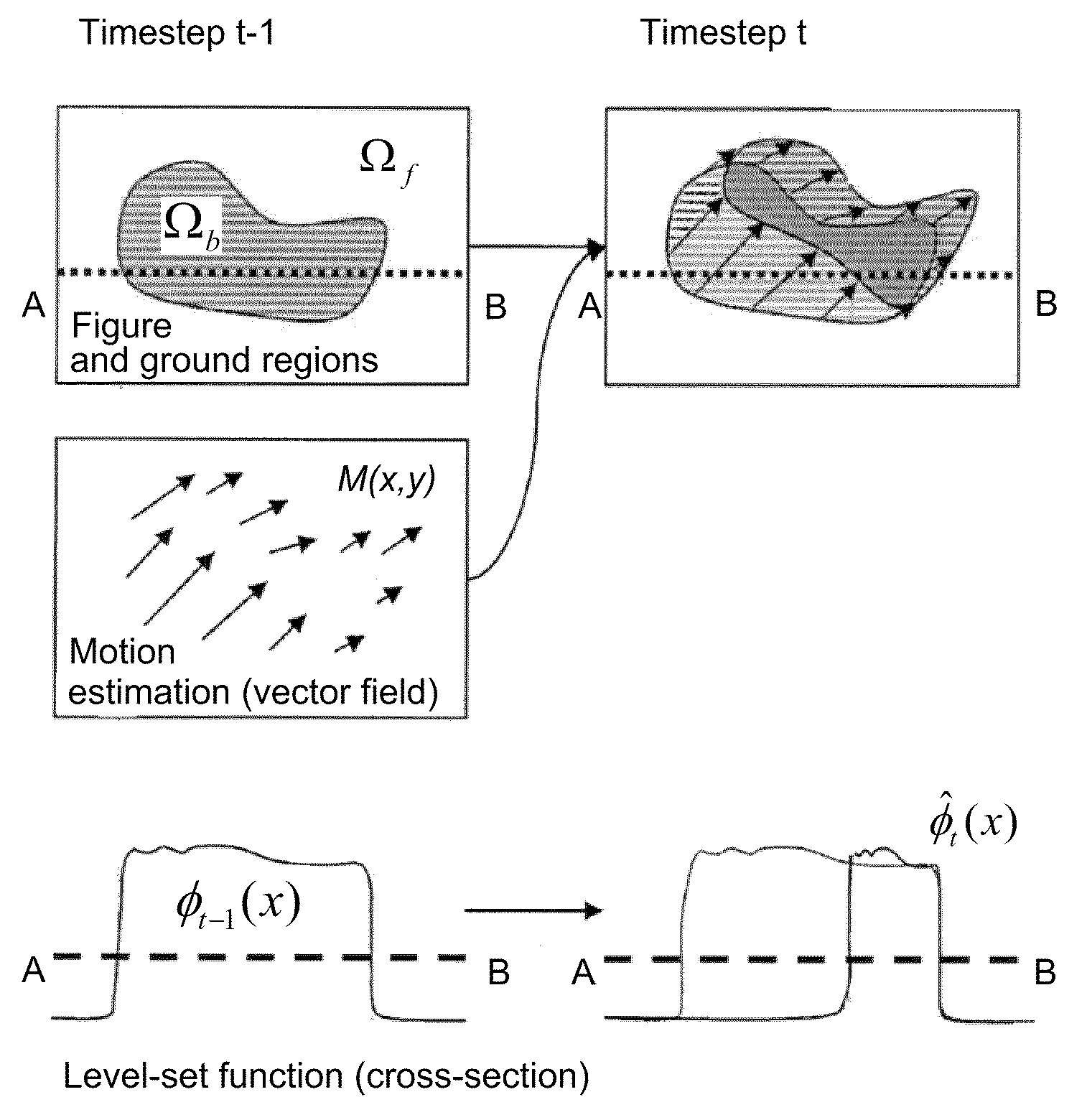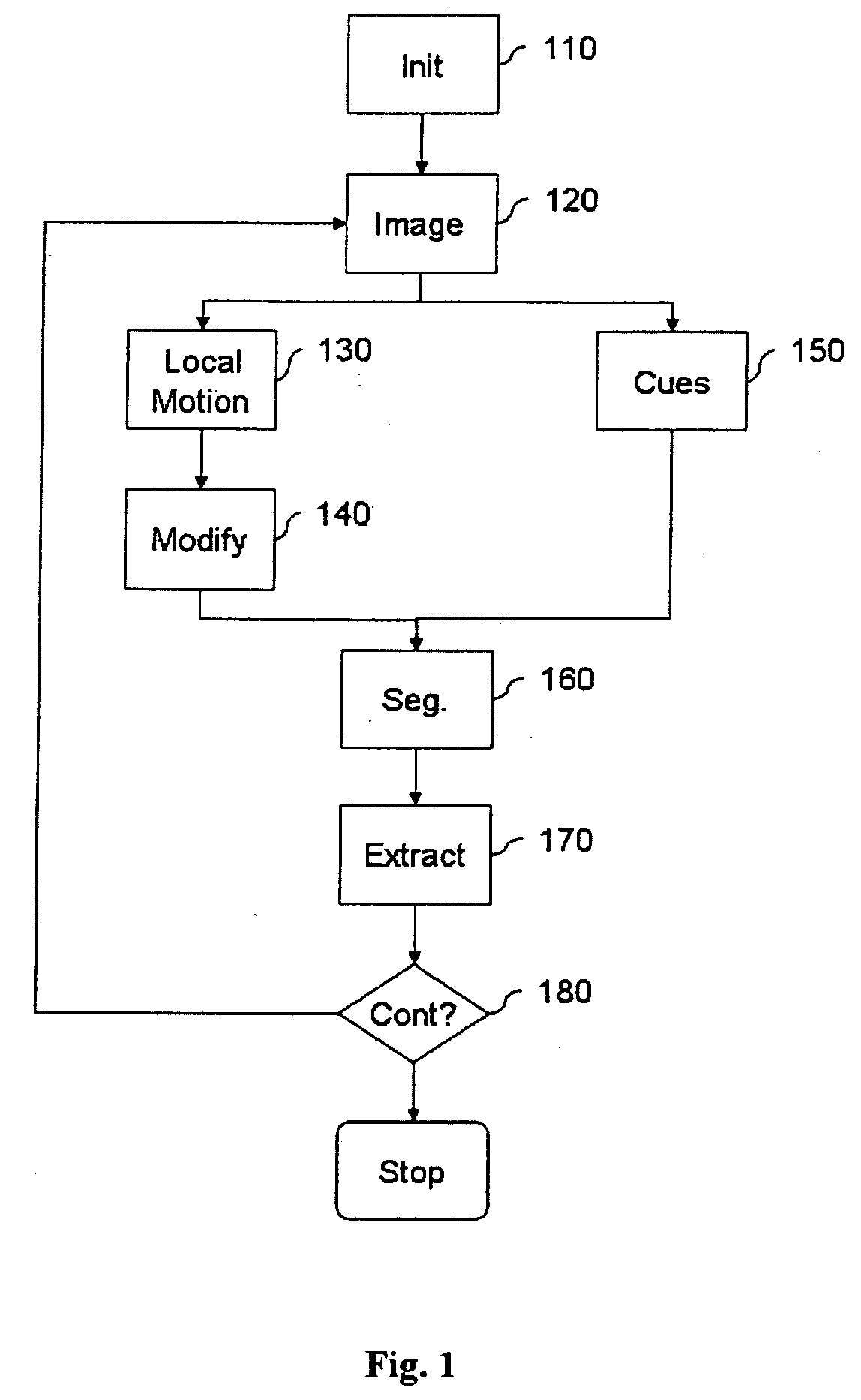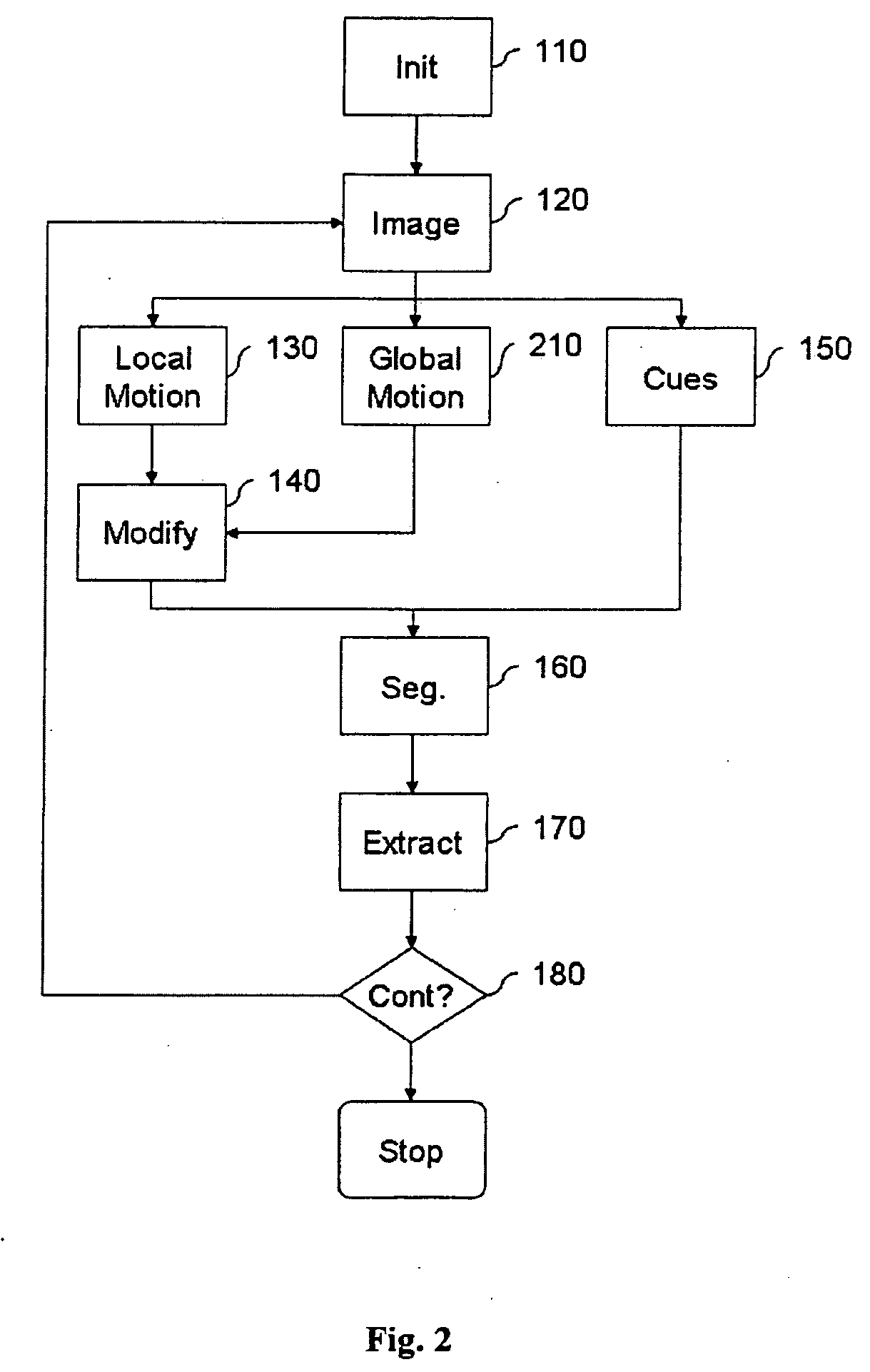Method And Device For Continuous Figure-Ground Segregation In Images From Dynamic Visual Scenes
a dynamic visual scene and figure-ground segregation technology, applied in the field of methods and devices for continuous figure-ground segregation in images from dynamic visual scenes, can solve the problems of error-prone and computationally very costly figure-ground segregation over time, and achieve the effect of improving the segregation process
- Summary
- Abstract
- Description
- Claims
- Application Information
AI Technical Summary
Benefits of technology
Problems solved by technology
Method used
Image
Examples
first embodiment
[0030]FIG. 1 shows a method according to the invention. It is assumed that the images are to be separated into the two regions Ωf (figure) and Ωb (background).
[0031]The core of the method is a level-set (LS) function Ø(x, y) that is used to describe a height field from which the figure and background regions Of and 06 can be extracted by defining
Ωf={x,y:φ(x,y)>0}
and
Ωb={x,y:φ(x,y)>0},
so that the figure region is defined by all positions where the LS function is larger than 0 and the background region is defined by all the positions where the LS function is smaller than 0 (the portion where the LS function is equal to 0 constitutes the border between figure and ground).
[0032]The level-set function is modified as a result of the figure-ground segregation algorithm, resulting in a relaxation algorithm that optimizes a score functional that incrementally provides an improved description of the figure versus the ground areas. The level-set function also enters the algorithm as an initial ...
second embodiment
[0047]FIG. 2 shows a flowchart of a method according to the invention. Besides the steps already described in relation to FIG. 1, bearing the same reference signs, the flowchart further comprises a step 210, wherein a global motion pattern is extracted.
[0048]In this step, for the extraction of the global motion pattern the local motion estimations from the figure area are taken, the best match between them and the set of allowed global motion patterns is searched, and the winning global motion pattern {circumflex over (M)}t(x, y) is returned, which can then be merged with the local motion estimations.
[0049]The consideration of motion information for the prediction of the next object contour also enables the incorporation of compensation mechanisms from external sources. This would be the case if, for example, one uses the method on camera images gained from a moving platform like a robot or a car, from which some information about its own egomotion is available, then the expected mo...
PUM
 Login to View More
Login to View More Abstract
Description
Claims
Application Information
 Login to View More
Login to View More - R&D
- Intellectual Property
- Life Sciences
- Materials
- Tech Scout
- Unparalleled Data Quality
- Higher Quality Content
- 60% Fewer Hallucinations
Browse by: Latest US Patents, China's latest patents, Technical Efficacy Thesaurus, Application Domain, Technology Topic, Popular Technical Reports.
© 2025 PatSnap. All rights reserved.Legal|Privacy policy|Modern Slavery Act Transparency Statement|Sitemap|About US| Contact US: help@patsnap.com



